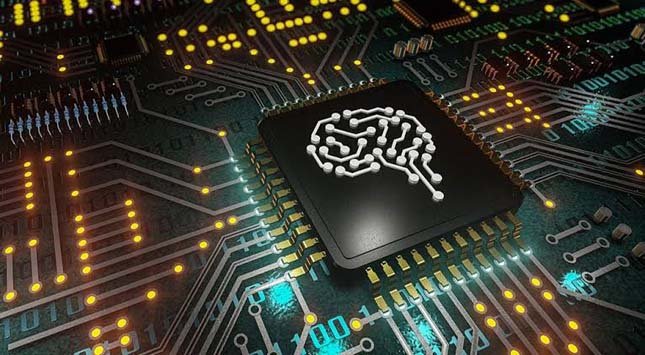AI accelerators are specialized hardware accelerators or computer systems.
They are high-performance parallel computation machines that can accelerate AI and ML computations and perform resource-intensive tasks. Hence, these are emerging as AI ecosystem innovators who are augmenting the next generation of artificial intelligence.
AI accelerators are leveraging the development of cheaper and faster chips to improve performance, reduce latency, and minimize deployment costs.
The hardware infrastructure of an AI accelerator consists of computing, storage, and networking. In comparison to general-purpose hardware, AI accelerators offer faster computation and high bandwidth memory. The growth in data processing is increasing the demand for dedicated AI accelerators.
You May Read: Role of Virtualization in Cloud Computing
AI chips use novel architectures, and some of the emerging hardware accelerators use GPUs, wafer chips, reconfigurable neural processing units (NPUs), neuromorphic chip architectures, and analog memory-based technologies. These hardware accelerators are used extensively in AI chips for expediting data-intensive tasks, data reuse, and data locality.
At present, there are two distinct AI accelerator spaces, i.e., the data center and the edge. Data centers require scalable compute architectures, and AI accelerators can deliver more compute memory and communication bandwidth with faster speeds and scalability than traditional architectures.
For the edge, intelligence is distributed at the edge of the network instead of a centralized delivery, which offers three essential capabilities: local data processing, filtered data transfer to the cloud, and enhanced decision-making. AI accelerators are playing a vital role in five key areas.
5G Access Edge
The ongoing transition of the mobile cellular network from 4G to 5G demands significant infrastructure upgrades. It has augmented the virtualization and disaggregation of Radio Access Network (RAN) architecture. RAN network uses radio frequencies to provide wireless connectivity to the devices.
The centralized RAN processing unit uses virtualization techniques and AI accelerators which help to reduce latency and improve bandwidth at the edge of the 5G network. AI accelerators play an essential role in accelerating the edge of 5G services.
5G Network Edge
5G edge computing technology enables companies to leverage their networks and fundamentally transform the way they design and deliver their network services. This will result in improved speed, low latency, overcoming the longstanding last-mile latency problems, and increased number of device connections.
The use of network acceleration adapters is used to impart better network experience in 5G technology, enabling use cases that were impossible before over a mobile network.
AI Workloads / Solutions
Businesses are optimizing AI accelerators for a wide range of AI workloads with minimum investment. AI accelerators can support heterogeneous computing platforms and compatibility with various algorithms. It can perform acceleration at the edge, in the data center, or somewhere between and facilitates optimal AI workloads spanning from training to inferencing.
Training a deep neural network (DNN) model demands a longer running time and higher energy requirements. AI accelerators make AI training less intensive while supporting enhanced energy efficiency. These accelerators can perform more calculations without enduring greater power consumption and heat dissipation.
IoT / Edge Computing
AI accelerator is changing the face of edge computing. As decision-making is increasingly dependent on AI, the edge is the perfect location for integrating the AI model in the cloud. AI and ML models are now using Graphics Processing Units (GPU) in the cloud to speed up training.
Since edge computing has fewer resources and computing power than a data center, AI accelerators are being used to bridge the gap between the data center and the edge. These accelerators assist the CPU of the edge devices in stimulating the inferencing process and predicting, detecting, and classifying data in the edge layer faster.
The AI accelerators have a smaller physical and power footprint, facilitating the integration of high-accuracy AI at the edge. It finds greater significance in emerging use cases like predictive maintenance, anomaly detection, robotics, and more. As AI is becoming the key enabler of the edge, AI accelerators are increasingly used for leveraging AI inferencing.
Centralized Data Center / Cloud
There is a significant demand for high-performance hardware accelerators in chips that power data centers and can quickly perform training and inference tasks within a given power budget. AI accelerators can provide power-hungry workloads for data center applications, like streaming video content.
These accelerators can deliver various data-driven workloads that range from deep learning to natural language processing. The data center architectures host the infrastructure for deep learning, storage, and data processing.
These AI accelerators provide large data centers with high-performance computing at a lower energy cost with short latencies, fast code porting, and support for various deep learning frameworks.
It can train deep learning models at scale quickly and with reduced energy consumption. Hence, the data centers and the cloud have access to specialized acceleration for complex AI applications.
To Conclude:
AI accelerators significantly decrease the time taken to train and execute an AI model, either at the edge or at the center. Hence, it supports the AI boom by enabling companies to easily harness the power of AI as it is coming of age to perform next-generation workloads and drive digital transformation.





